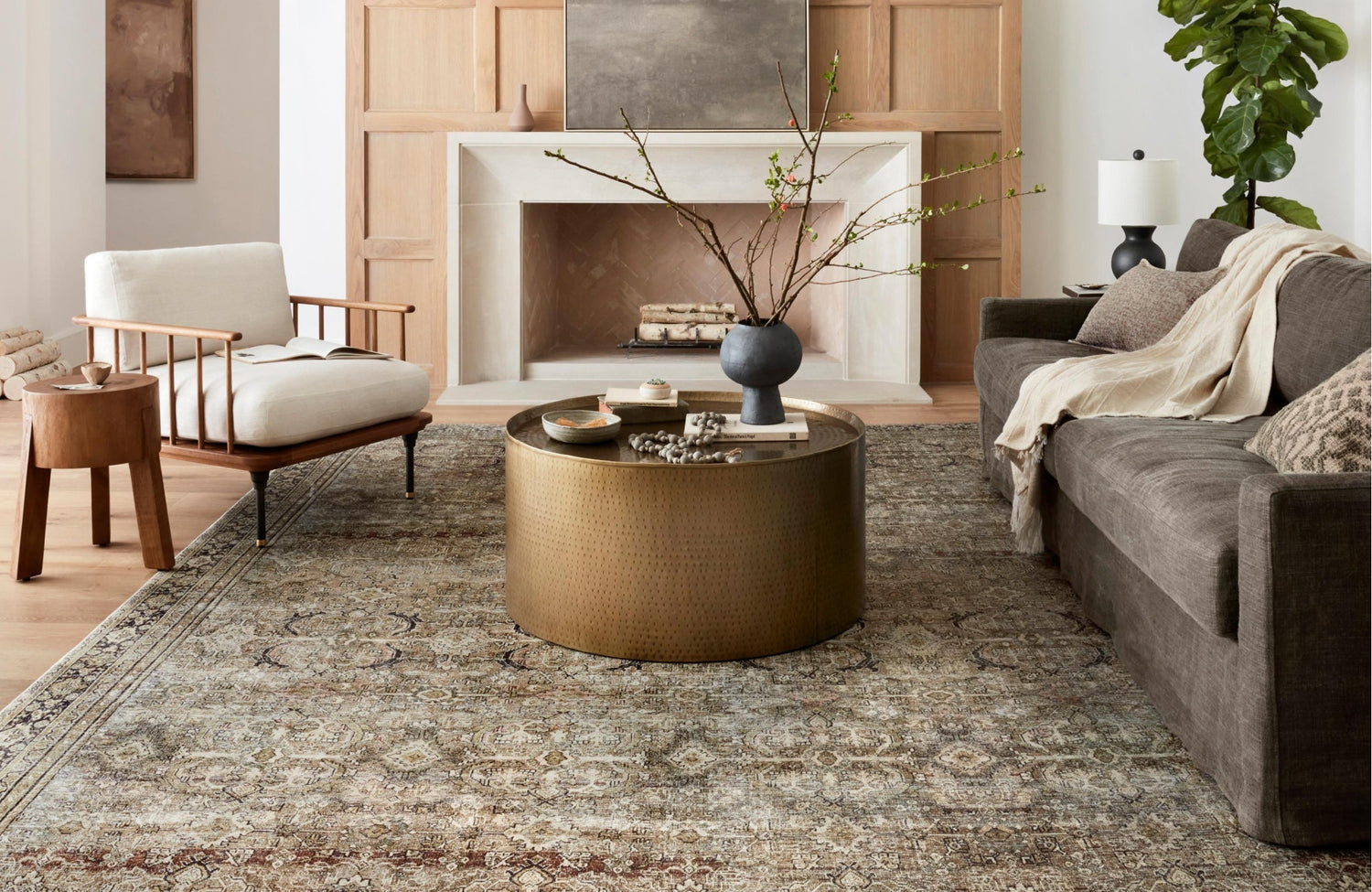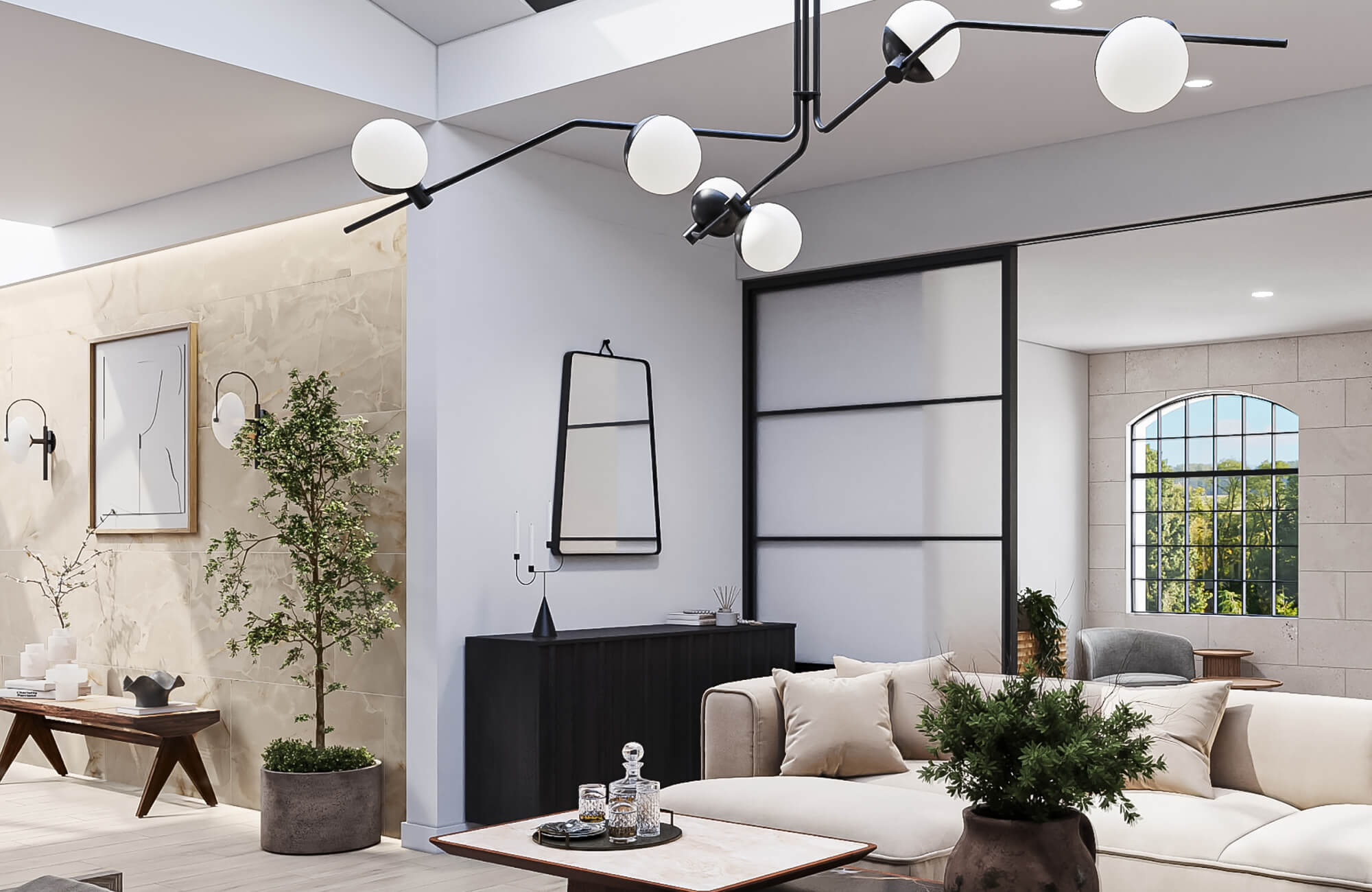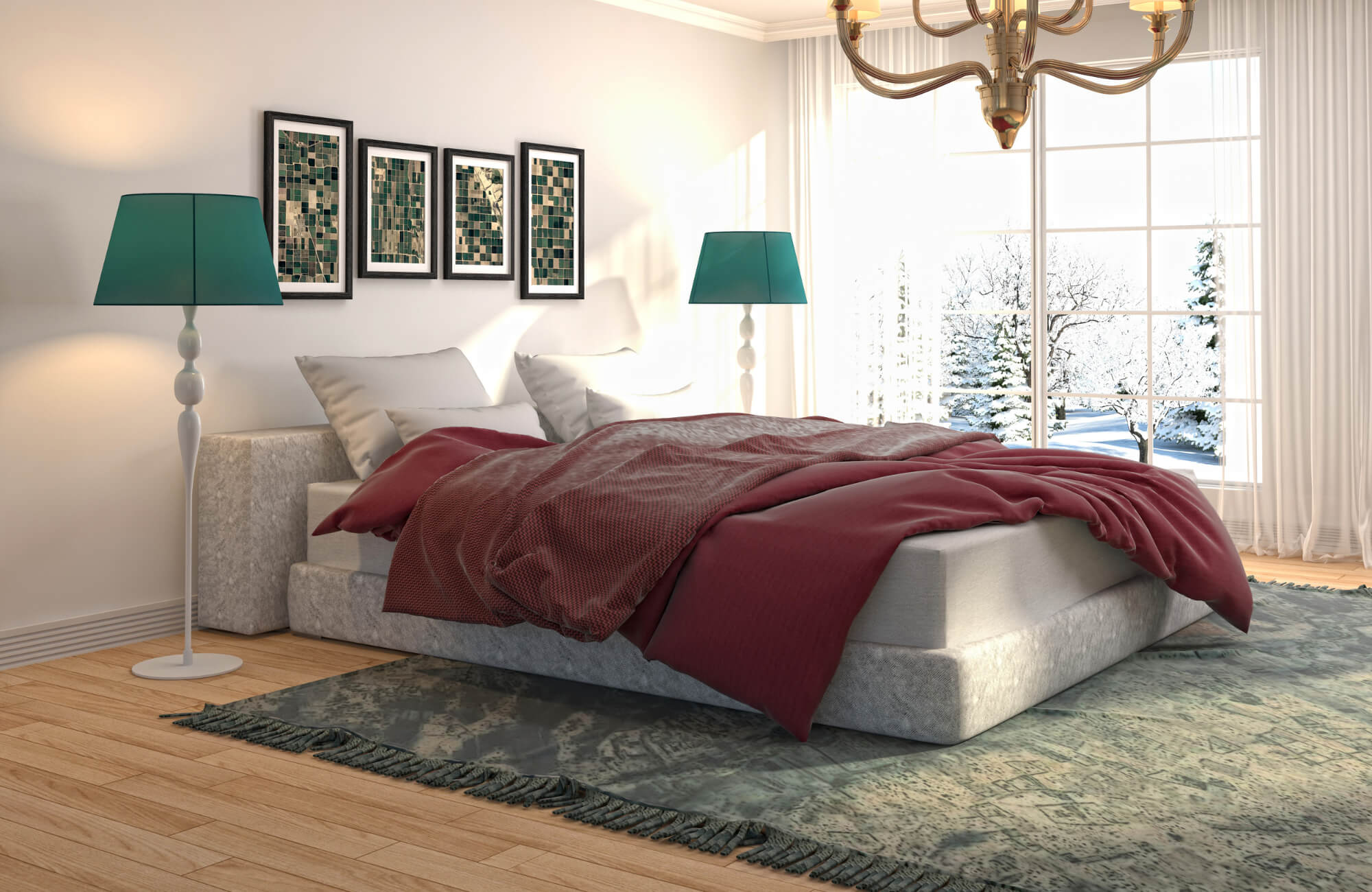Have you ever put down a rug and felt like the room still wasn’t quite right? That’s where the 18-inch rule comes in. It’s a simple yet surprisingly effective design guideline that helps your rug frame the room in a way that feels balanced and intentional, especially when you're working with white tile floors. Whether you’re styling a polished living room or updating a sunny breakfast nook, this rule brings a sense of harmony between your rug and everything around it. In this article, we’ll break down what it is, when to use it, and how to make it work seamlessly, even with bold checkerboard tiles.

Understanding the 18-Inch Rule in Rug Placement
When you’re choosing a rug for a tiled floor, especially one with a bold pattern or noticeable tone, getting the proportions right can make all the difference. The 18-inch rule provides a straightforward guideline that adds structure to the room while still allowing for ample creative expression.
What the 18 Inch Rule Means
At its core, the 18-inch rule is about proportion. It recommends leaving around 18 inches of exposed floor between the rug’s edges and the surrounding walls. This space acts as a subtle design frame, guiding the eye and giving the rug a clear place within the room’s layout. Much like matting artwork, the open border draws attention inward, allowing the rug to feel deliberate and integrated, not just placed.
When rugs extend wall to wall, they can overwhelm a room or make it feel boxed in. Applying this spacing keeps the layout light and well-proportioned. And if your floors feature details like tile lines, wood grain, or intricate finishes, this breathing room lets those elements remain visible and part of the design.
A great example of this is Edward Martin’s Pascal Polyester Face Rug in Spice / Cobalt, featured in the photo above. It sits beautifully within the space, rich in pattern, yet balanced by the surrounding open floor. It’s a small adjustment with a big visual payoff.
Why It Works for Visual Balance
When rugs either stretch too close to the walls or sit far from nearby furniture, the room can lose its sense of flow. That’s where the 18-inch rule offers subtle structure; it helps define where the rug belongs with everything else. By maintaining a consistent perimeter of exposed flooring, the layout gains rhythm and clarity.
This spacing also enhances how furniture interacts with the rug. Sofas, accent chairs, and coffee tables feel more anchored when placed partially over the rug, rather than floating beside it. Especially in rooms with tile or wood flooring, this kind of alignment makes the space feel more intentional and less improvised. It’s a design cue that brings everything together without shouting for attention.
Exceptions and Flexibility
Of course, this rule isn’t meant to limit your creativity. In smaller spaces, like studio apartments, compact bedrooms, or narrow hallways, you don’t have to sacrifice function just to meet the 18-inch mark. In these situations, scaling the border down to 12 inches, or even 10, can also help the space feel cohesive without forcing you into an awkwardly small rug.
Ultimately, it’s all about proportion. A 6x9 rug works beautifully in a 10x12 room because the dimensions stay balanced. But place that same rug in a roomy 16x20 living area, and it’ll likely feel too small unless you allow it to breathe with a wider border. That’s why it’s best to treat the 18-inch rule as a flexible guide, not a fixed rule. Let the size of your space lead the decision, and adjust as needed to keep everything feeling visually aligned.

Using the Rule with White Tile Flooring
White tile floors have a timeless appeal. They’re clean, bright, and instantly elevate the look of a room. However, without the right design touches, they can sometimes come across as a bit cold or overly minimal. That’s where the 18-inch rule helps strike the perfect balance, adding structure while softening the overall feel.
Framing Contrast with White Tiles
White tile floors, whether glossy or matte, naturally draw attention to anything placed on them. When you leave an 18-inch border of open tile around your rug, you’re not just following a guideline, but also enhancing contrast and creating visual clarity. That crisp edge acts like a spotlight, helping your rug stand out without overwhelming the space.
Think of it like placing a bold print on a clean white mat; the blank space adds emphasis. A richly patterned rug or one with deep color feels more defined with that subtle tile border, making the entire layout feel more composed and intentional.
Avoiding Visual Clutter
Without enough open space around the edges, rugs can feel like they’re encroaching on the room. This becomes especially noticeable on reflective surfaces like white tile, where every corner and edge stands out. When a rug is pushed too close to the wall, it disrupts the room’s lines and makes the layout feel tight.
Following the 18-inch rule helps maintain openness. The space feels lighter, more breathable, and easier on the eyes. It also allows flooring details, whether porcelain, ceramic, or marble, to be part of the visual conversation, instead of hiding beneath the rug.
Material and Color Tips
This is where the styling starts to come together, especially with white floor tiles. Because white tile often has a cool, crisp feel, both to the eye and the touch, it’s important to bring in materials that add a bit of warmth and softness. Rug options like wool or flatweave cotton do exactly that, offering texture and comfort without making the space feel heavy or overly layered.
In terms of color, deeper earth tones, such as rust, ochre, or a muted teal, can also bring in warmth and contrast while still complementing the lightness of the tile. The goal here isn’t to compete with the flooring, but to create a gentle balance. That’s where the 18-inch rule plays another subtle role: it gives both the rug and the white tile their own space to breathe. With this buffer in place, you allow each element to stand while still contributing to a cohesive, well-balanced design.

Checkerboard Pattern with Rug and Tile
Checkerboard tiles make a statement. Whether you’re working with classic black and white, subtle taupe and cream, or something more playful like green and white, the pattern naturally draws the eye. That’s precisely where the 18-inch rule proves its value; it brings structure to the layout, preventing visual overwhelm and reinforcing the symmetry that makes checkerboard designs so striking.
Using Checkerboard Rugs
When the rug itself features a checkerboard pattern, placement becomes especially important. Because the design is already bold and attention-grabbing, crowding it too close to walls or furniture can make it feel overwhelming or visually off-balance.
This is where thoughtful spacing truly matters. Leaving a consistent border of exposed floor, whether it’s tile, wood, or concrete, gives the pattern room to breathe and allows the rug to feel intentional rather than overpowering. Even if the checks don’t perfectly align with the flooring underneath, the rug can still look cohesive and well-positioned.
A great example of this approach is Edward Martin’s Sweeney Wool Pile Rug in Graphite, pictured above. Its soft checkerboard texture is framed by open space on all sides, creating just enough contrast to stand out while still blending effortlessly into the room’s overall design.
How the Rule Enhances Symmetry
Checkerboard floors rely on balance. The repeating pattern thrives when the room’s layout supports its rhythm. When you place a rug over this kind of tile, spacing it evenly with about 18 inches of exposed floor around the edges helps reinforce that symmetry. It’s like framing a piece of artwork; the border brings structure.
This becomes especially helpful in open floor plans, where visual boundaries are less defined. Without that spacing, the rug can feel like it's floating without purpose. With it, the placement feels precise, like it belongs within the checkerboard, not on top of it.
Layering on Checkerboard Tile
Not every rug is meant to compete with checkerboard tile. Instead of doubling down on boldness, the 18-inch rule offers a way to separate strong visuals with a clean buffer. That open edge allows each surface, rug, and tile to shine without overpowering the other.
In these scenarios, simpler rugs tend to work best. Consider solid tones, soft textures, or natural materials like jute or wool; options that add warmth and depth without introducing visual noise. The spacing serves as a subtle visual pause, helping the eye appreciate each element on its own while keeping the overall look balanced and serene.

Measuring and Implementing the 18 Inch Rule
Now that we’ve covered why the 18-inch rule works, let’s walk through how to use it. This isn’t just a design idea; it’s a straightforward, practical tool that helps you pick the right rug and place it with purpose. A measuring tape is all you need to start making decisions that feel as good as they look.
Room Preparation
Start by measuring the full dimensions of your room. For instance, if the space is 12 feet by 15 feet, subtract 36 inches from each side; 18 inches per wall. That leaves you with a “rug zone” of about 9x12 feet, which gives you a clear target to guide your selection.
If your room is divided into zones, such as a defined seating area within an open layout, focus your measurements on that main section. Use the same approach to establish proportions, making sure the rug enhances the space without overpowering it.
Choosing the Right Rug Size
Once you’ve measured your space, you’ll be better equipped to choose a rug that fits naturally. If your rug zone is roughly 9x12 feet, that’s what you should aim for. Trying to squeeze in a rug that’s too large throws off the proportions, while a smaller one may end up feeling disconnected.
Trust your measurements more than how a rug looks in a showroom. If you're in between sizes, go slightly smaller to preserve that clean border. And keep in mind that many rugs are labeled in standard sizes, like 5x8 or 8x10, but their actual dimensions can vary, so always double-check before you buy.
Aligning the Rug with Furniture
A well-placed rug does more than meet spacing guidelines; it also brings harmony to your furniture arrangement. In living rooms, placing the front legs of your sofa and chairs on the rug helps visually tie the seating area together while leaving enough space behind to maintain an open, breathable feel.
For instance, Edward Martin’s Georgette Polyester Pile Rug in Sand / Peach, featured in the photo above, demonstrates this beautifully. It anchors the furniture layout with ease, offering just the right amount of coverage to feel cohesive without overwhelming the space.
In bedrooms, centering the rug beneath the bed and leaving even spacing on both sides helps maintain symmetry and visual balance. Meanwhile, in dining areas, it's essential to account for pulled-out chairs when measuring rug dimensions. This ensures the entire dining setup stays grounded and functional. With a bit of forethought, your rug doesn’t just fit the room; it also becomes a natural extension of the furniture itself.

Design Challenges and Creative Solutions
Homes often come with quirks: off-center walls, built-ins, or wide-open plans that don’t lend themselves to symmetry. The 18-inch rule is meant to guide, not restrict. When your space presents unique design puzzles, there are flexible ways to adapt it while still creating a cohesive look.
Dealing with Irregular Room Shapes
If your room has angles, bump-outs, or an open-concept layout, applying the 18-inch rule edge-to-edge might not feel natural. In these cases, consider treating the furniture grouping as its zone. Focus on framing the main seating or functional area, rather than trying to follow the outermost walls.
This can also help establish a sense of order even when the room’s structure isn’t perfectly symmetrical. In open spaces, defining distinct zones with a thoughtfully placed rug adds clarity while maintaining the openness.
Working Around Fixtures or Built-ins
Built-in shelves, fireplaces, and radiators can complicate rug placement, but they don’t have to. Instead of forcing the rug to fit between every feature, focus on the open floor where your furniture sits. If a built-in interrupts one side of the border, it’s completely okay as long as the overall layout feels balanced.
A strong example is Edward Martin’s Hutchinson Polyester Face Rug in Graphite / Olive, as displayed in the photo above, placed around a seating area that includes built-in shelving and a fireplace, without conforming tightly to every architectural edge. Instead, it centers on the furniture, proving that even with fixed features, you can maintain balance and flow.
Blending with Rugs of Unusual Shapes
Not every rug is rectangular, and that’s part of its charm. Whether you’ve chosen a round jute rug or an asymmetrical hide, the 18-inch concept can still guide you. Instead of focusing on precise measurements, think in terms of breathing room.
For instance, a round rug centered under a table or nestled in an entryway can still feel balanced if there's enough floor visible around it. The goal is to give these distinctive shapes space to shine, so they look like a feature, not an afterthought.

When and Why to Break the Rule
Design is a blend of structure and instinct. Although the 18-inch rule adds clarity and balance, there are times when stepping outside of it gives a space its character. You don’t need permission to break the rule; just a clear sense of what feels right for your room and why it works for the way you live.
Making Small Rooms Feel Bigger
In smaller spaces, strictly following the 18-inch border can sometimes make the room feel more confined. In settings like studios, compact bedrooms, or narrow hallways, allowing your rug to extend closer to the walls, or even wall-to-wall, can also help the space feel larger and more cohesive.
When the rug covers more of the tile flooring, especially in tones that match or complement the floor, it visually blends into the room rather than breaking it up. This creates a smooth sense of continuity, making the area feel more open. In these cases, adjusting the rule slightly and bringing the rug closer to the edges might be the better choice for a unified, spacious look.
Going for a Layered Look
Layering rugs has become a go-to styling technique, and for good reason. It allows you to mix textures and contrast in a way that feels dynamic, without committing to a single bold statement. In these setups, the 18-inch rule becomes more flexible, giving you room to play with proportion and placement.
A good starting point is a larger neutral base rug, such as sisal or jute, placed casually within the space. From there, layer a smaller, patterned rug on top, whether centered, angled, or slightly off to the side. The base layer adds structure and warmth, while the top rug brings in color and personality. It’s a simple way to create dimension while keeping the layout grounded.
This idea comes to life with Edward Martin’s Pascal Polyester Face Rug in Burgundy / Graphite, layered over a textured jute foundation and featured above. Together, they add richness and depth, allowing each rug to stand out in its subtle way. It’s a thoughtful, stylish example of how layering can make a space feel effortlessly grounded and refined.
Embracing Bold, Intentional Choices
At times, the most compelling designs are the ones that confidently break the rules. If you’re working with a bold rug, whether it features a vivid pattern, an unconventional shape, or a luxe material, it might deserve to take center stage, with or without the traditional border.
What matters most is that it feels intentional. Rather than making the rug seem like an afterthought squeezed into the space, design the room in a way that highlights it. When the rug becomes the focal point, the 18-inch rule shifts from a standard guideline to a design choice; something you can thoughtfully bend to suit your vision.
Rethinking the 18-Inch Rule for Real Spaces
So, what is the 18-inch rule for rugs? It’s a simple guideline: leave about 18 inches of exposed flooring between your rug and the walls to create a clean, balanced frame. This subtle spacing trick can also help rugs feel integrated with the floor, the furniture, and the overall layout, especially on tile or patterned surfaces.
Of course, it’s not a one-size-fits-all rule. Adjust it when needed, and don’t be afraid to break it when the design calls for something bolder. If you’re not sure where to start, we’re here to help. Reach out for a personalized design consultation, and we’d love to help you create a space that feels just right!







